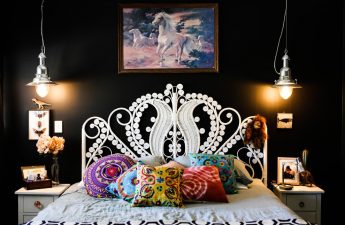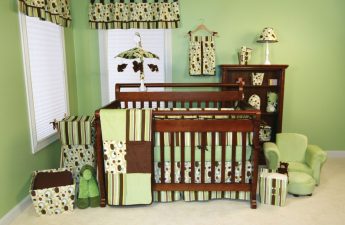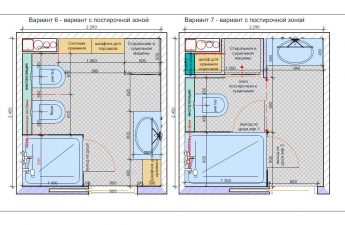In recent times, decorative beams have becomeare used more and more often. This technique not only looks good, but also helps to correct the geometry of interiors. Read here about what exactly can be smoothed out with beams and how to make them. When it comes to decorative beams, one immediately recalls thousand-year-old English pubs; half-timbered houses in the German Black Forest - this is where the Brothers Grimm collected folk legends for their fairy tales; small village inns in Northern France and other old, but terribly cozy places.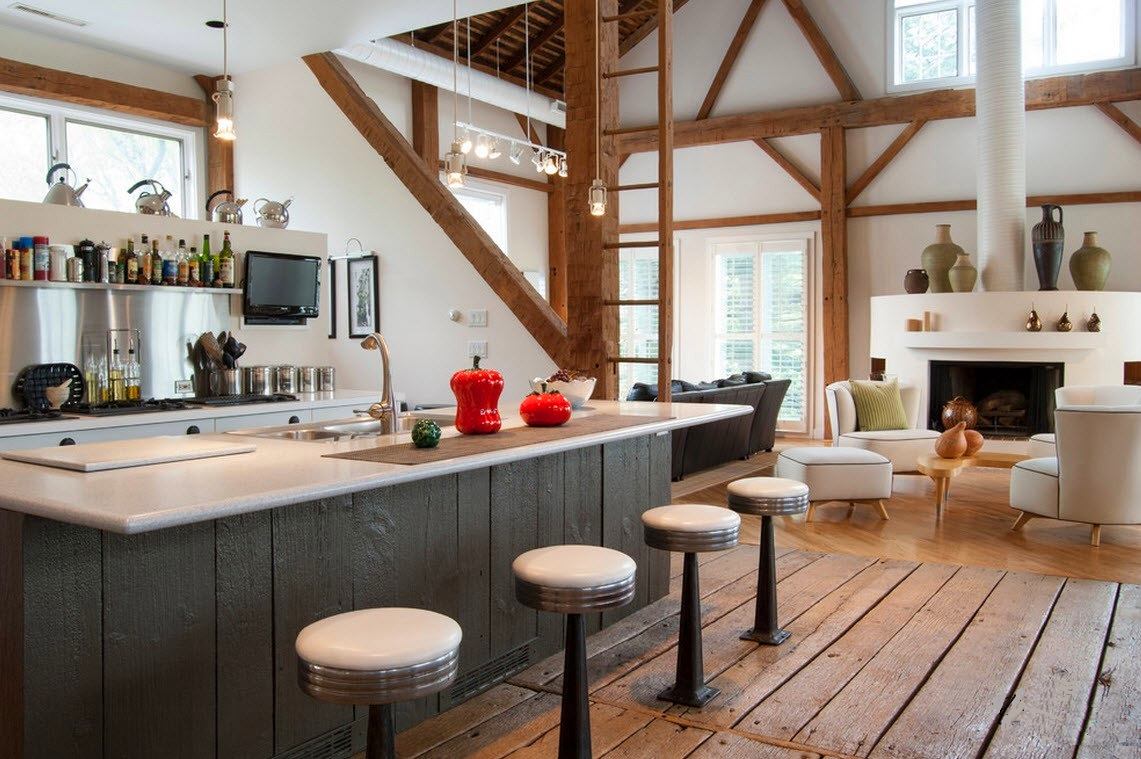


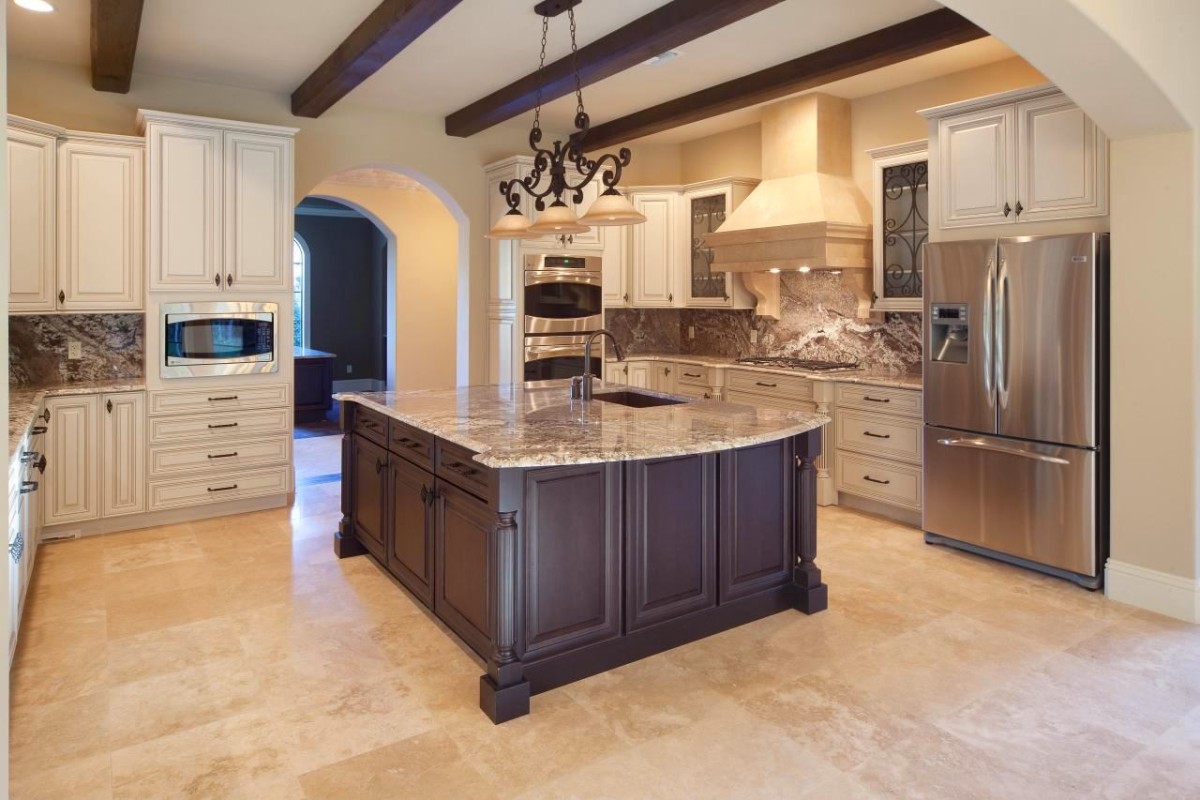
How to make beams yourself
Surprisingly, the beams (both ceiling and support)can be used in a modern interior, including apartments. It will not make your home medieval, but it can easily become one of the main decorative elements. The essence of the technology is simple. A solid wooden beam at least 15 cm thick is processed in a special way so that it no longer seems new and smooth, painted with a stain - translucent, so that the texture of the wood is visible, and then attached to the ceiling or walls. You can do all this yourself. Great accuracy is not required - the more textured, the more interesting. Editorial opinion: - When decorating an apartment, it is more convenient to use fake beams, they are called false beams. False beams are synthetic, lightweight and hollow inside, it is very easy to install. It is good because you can hide wires or pipes inside such a beam that cannot be hidden under the plaster, or, for example, install spotlights in it.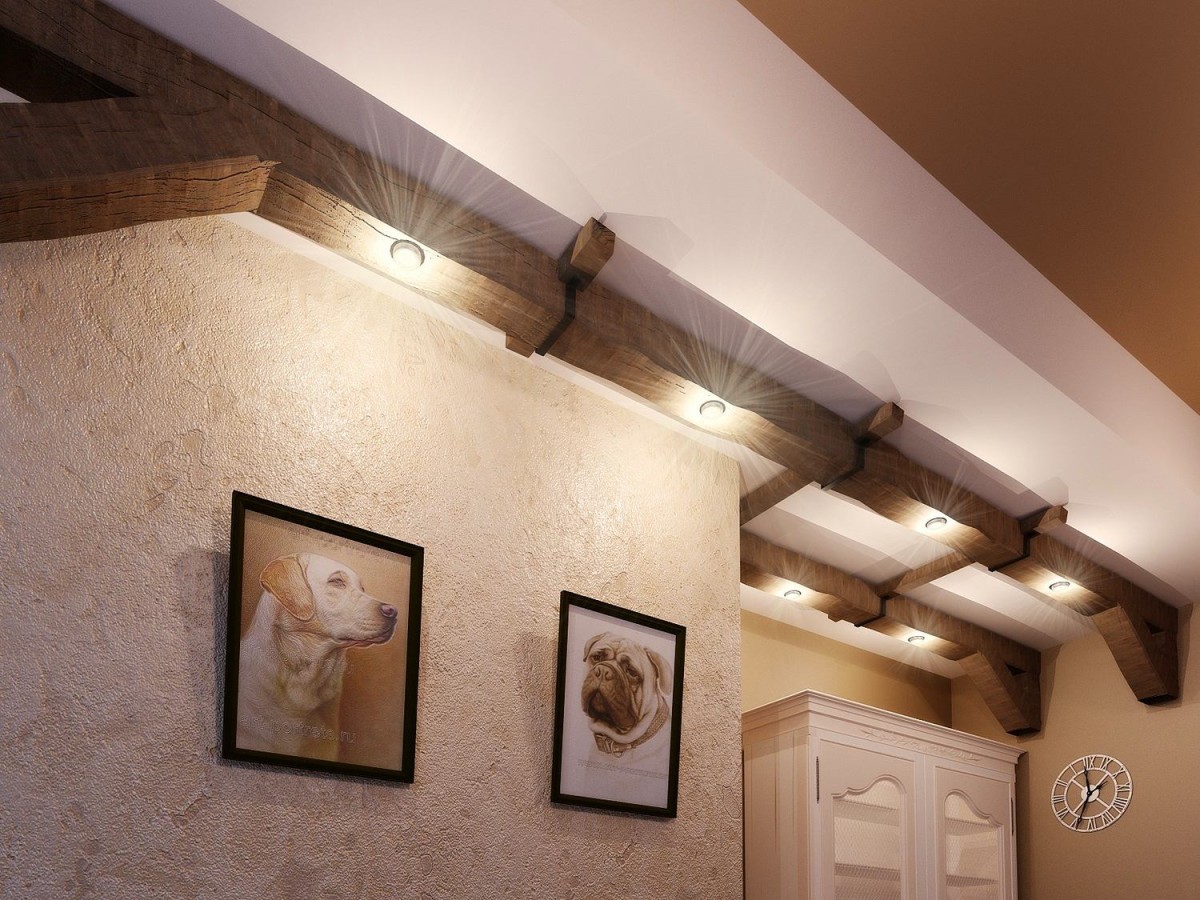
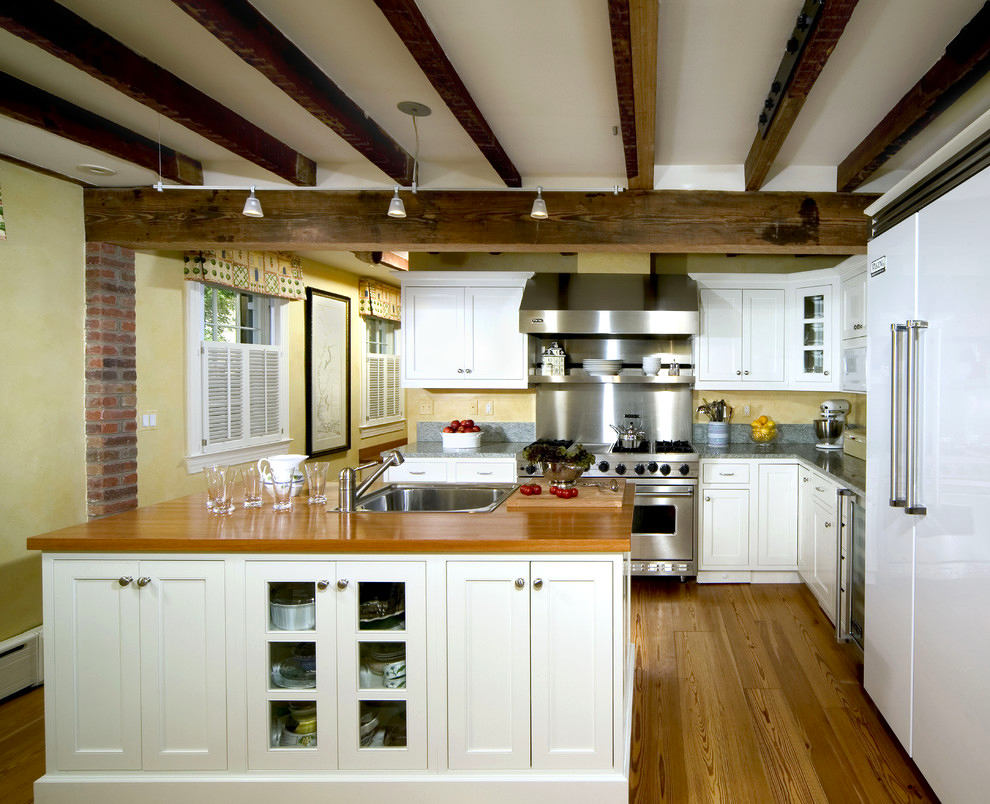
Beams as a functional element
The beams can be ceiling beams (in this case, theyfixed on top of the finished, painted ceiling), vertical (in this case they go between the floor and the ceiling, sometimes not vertically, but slightly at an angle) or framing (they can surround a window or something else). Initially, beams served as supporting structures, but this is not at all important to us. Although if there is a need - then, of course, why not. Most often, you want to install beams as a decorative element, but they can also carry a fairly significant functional load.
Note!
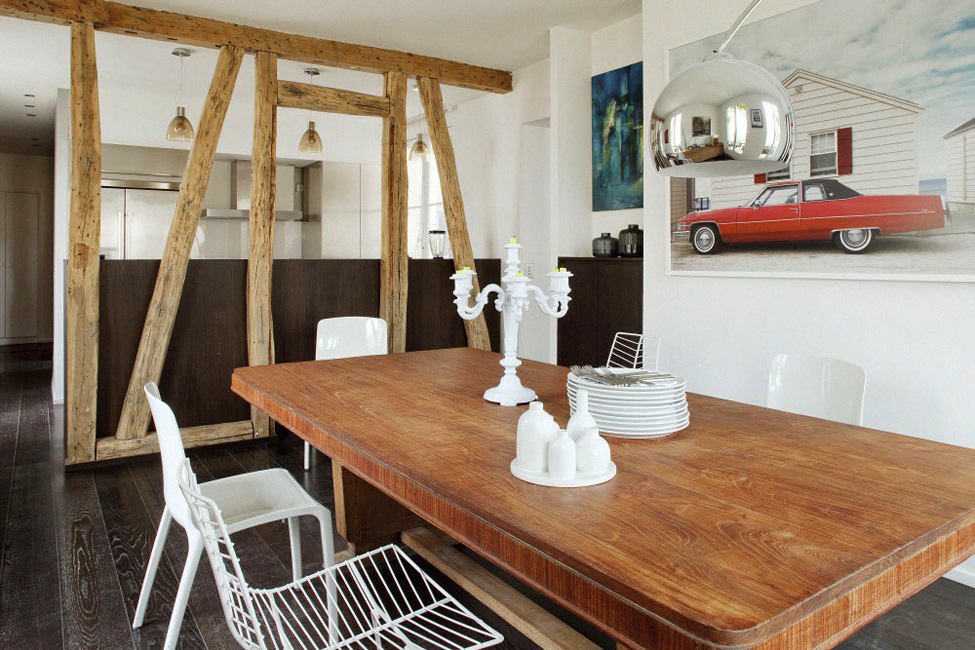
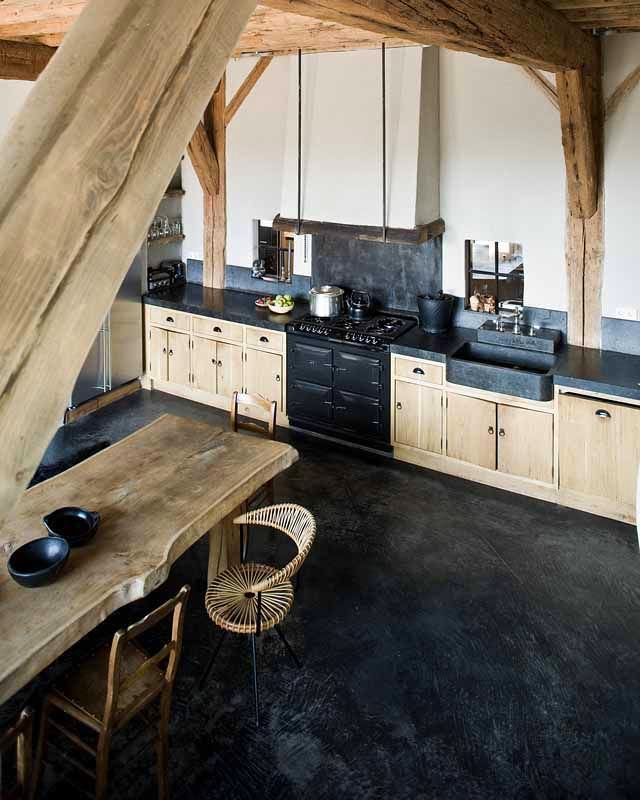
 You can create an interior with beams in an apartment, and even more so in a house. There are many opportunities for this decorative technique there.
You can create an interior with beams in an apartment, and even more so in a house. There are many opportunities for this decorative technique there.

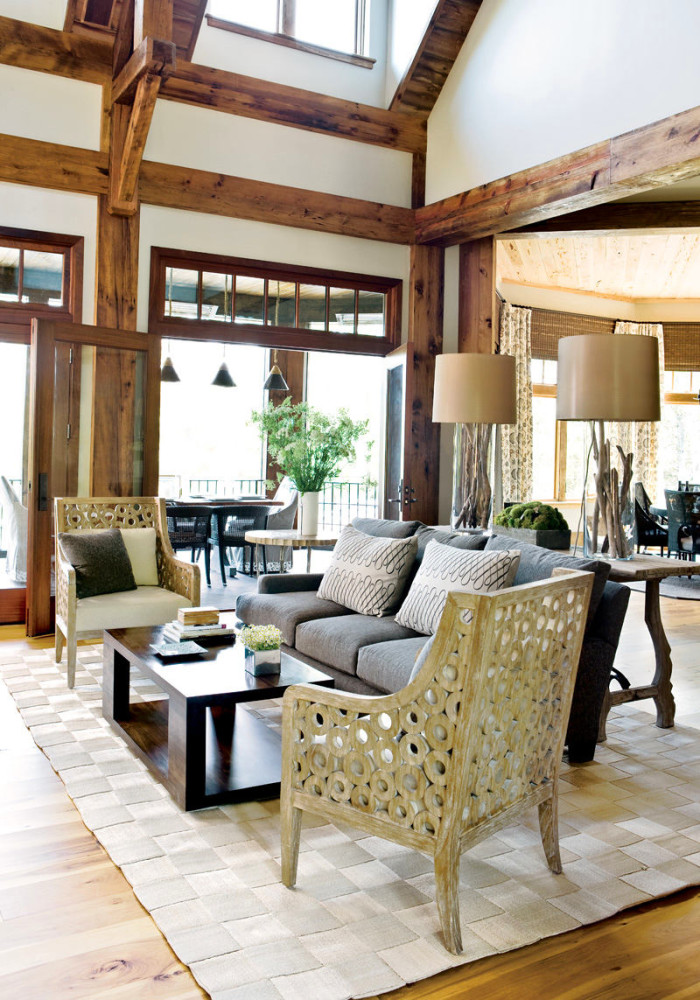

 Editorial opinion:— Beam structures are usually associated with Europe, but in fact, any interior can be created — from classic European to ranch, Japanese, African or tropical. Beams look good built into a loft or Scandinavian style — wood “softens” such interiors, makes them warmer.
Editorial opinion:— Beam structures are usually associated with Europe, but in fact, any interior can be created — from classic European to ranch, Japanese, African or tropical. Beams look good built into a loft or Scandinavian style — wood “softens” such interiors, makes them warmer.

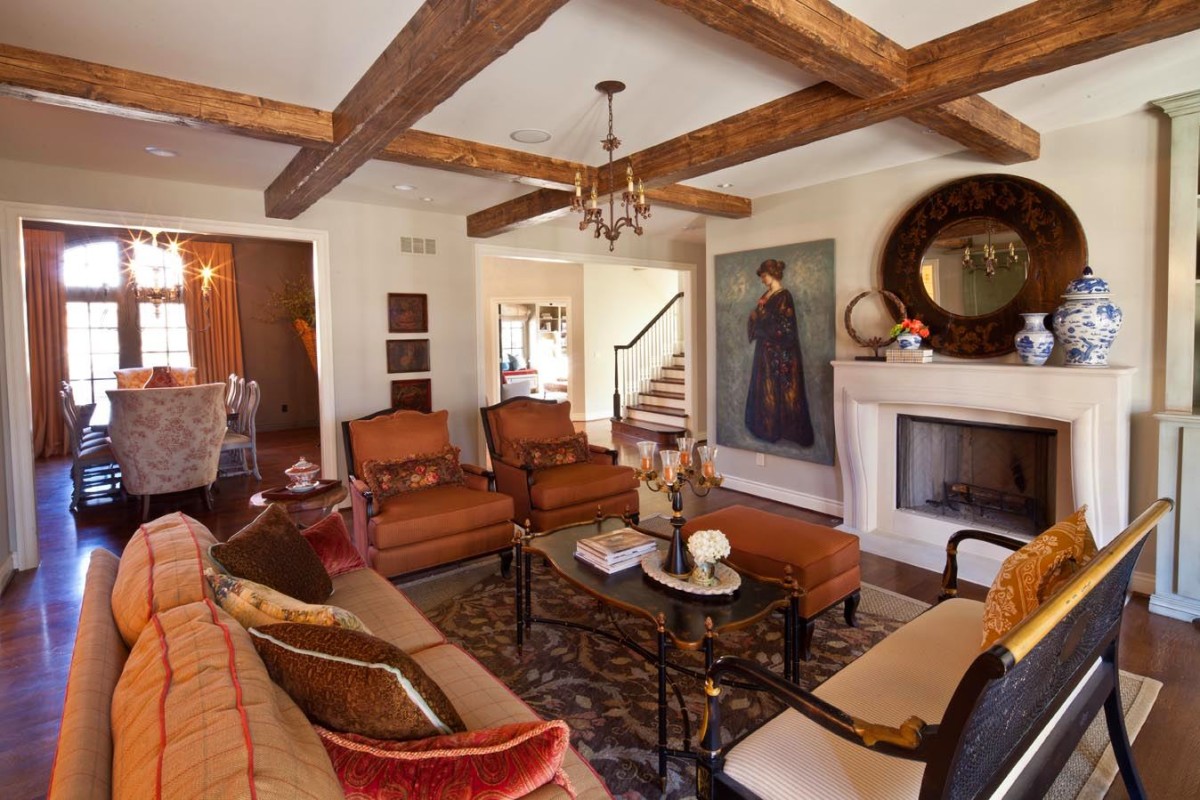 Design using beams requires careful consideration of furniture and textiles, but all together it will look very cozy, homey and even a little bit fabulous. pinterest.com
Design using beams requires careful consideration of furniture and textiles, but all together it will look very cozy, homey and even a little bit fabulous. pinterest.com
